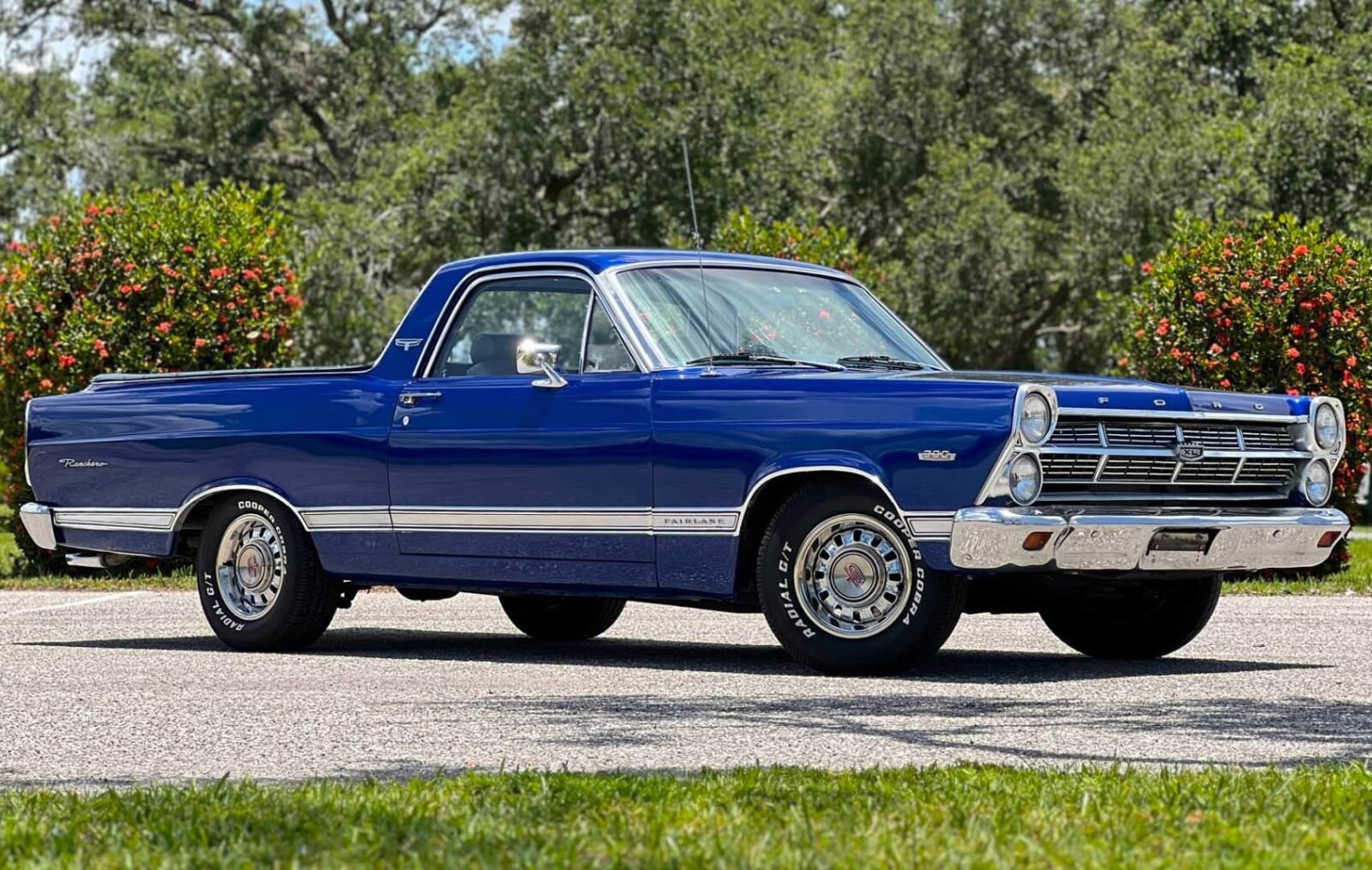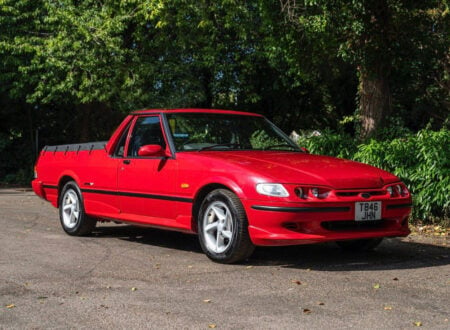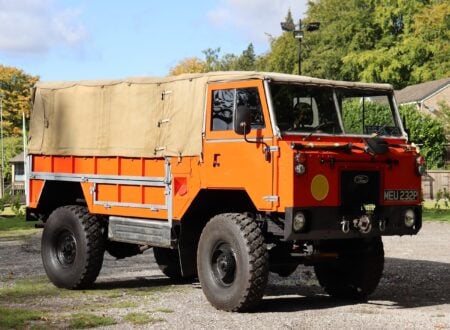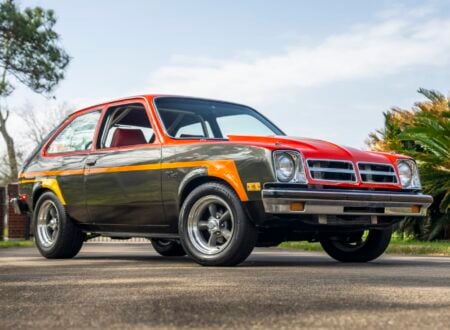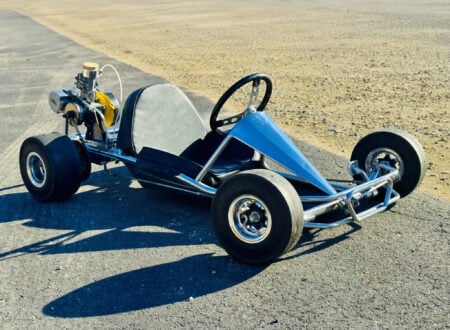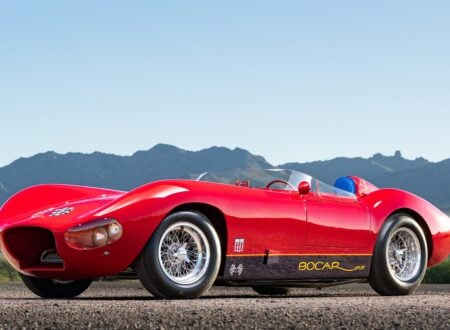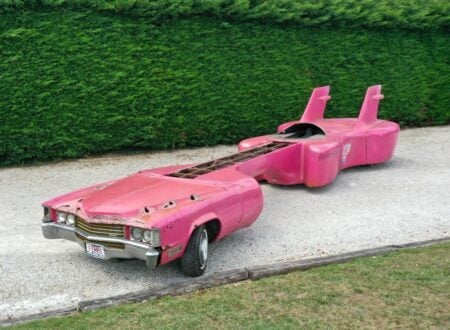This is a 1967 Ford Ranchero fitted with the highly-desirable factory 390 cubic inch V8 mated to a factory-original Toploader 4-speed manual transmission.
These 1960s-era Rancheros have a dedicated following, they were built on the same Ford Falcon platform as the Ford Mustang and offer a similar driving experience, with the added practicality of that sizable cargo area in the rear.
Fast Facts: The Ford Ranchero
- The Ford Ranchero was introduced in 1957 as a “coupe utility,” combining the driving comfort of a sedan with the cargo capacity of a pickup. Inspired by Australian utes, it launched on the Fairlane platform and was marketed to buyers needing a dual-purpose vehicle for both leisure and work.
- In 1960, the Ranchero moved to the compact Falcon platform, giving it improved efficiency and handling without losing its cargo hauling ability. By 1966, it adopted a larger Falcon-based body and offered bigger V8s, aligning it with rising interest in high-performance V8-powered vehicles during the muscle car boom of the late 1960s.
- The model transitioned to the Torino platform in 1968, adding muscle car styling as well as performance trim levels like the GT. It evolved over three more generations, gradually placing more emphasis on comfort and luxury features, especially versions like the wood-paneled Squire variant, before ending production in 1979 due to slowing sales.
- The 1967 Ranchero shown here is a desirable third-generation example equipped with the factory 390 V8, Toploader 4-speed manual, and a 9-inch rear end with a limited-slip differential. It has been cosmetically updated with metallic blue paint, a custom interior, power accessories, and it’ll be auctioned by Mecum in July.
History Speedrun: The Ford Ranchero
The Ford Ranchero first appeared in 1957 as a cross between a sedan and a pickup truck, marking the start of a new category/genre in the United States known as the “coupe utility.” It was inspired by similar vehicles that had been popular in Australia since the 1930s (called “Utes” down under), the Ranchero combined the comfortable road-friendly ride and handling of a passenger car with the practical utility of a truck bed for hauling cargo.
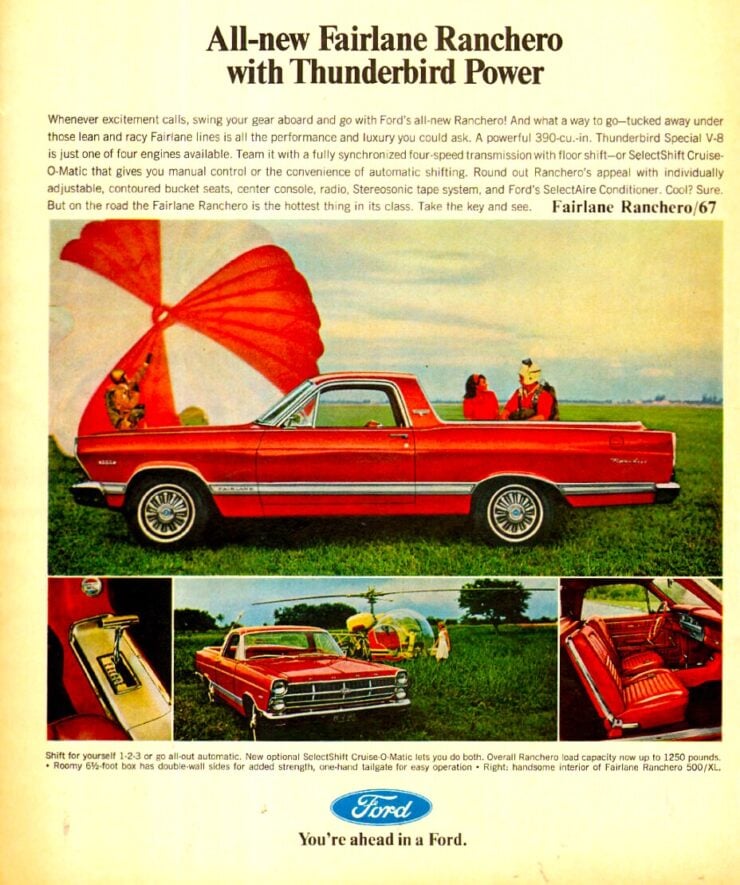

Introduced as part of the full-sized Ford lineup, the first-generation Ranchero (sold from 1957 to 1959) was based on the Ford Fairlane platform. It came with various engine options, from a fuel-sipping inline-six to more entertaining V8s. Its appeal was straightforward – it was an affordable car that could be daily driven, yet it could also haul gear, perfect for weekend chores, leisurely outings, or even use by farmers and tradesmen.
By 1960 Ford had shifted the Ranchero onto the more compact Falcon platform, adapting to American buyers’ growing preference for smaller, more economical vehicles. Interestingly, the Falcon platform would also underpin the Ford Mustang starting in 1964. The second-generation Ranchero (built from 1960 to 1965) was lighter, more efficient, and easier to handle – all without losing any significant cargo hauling ability.
The third generation arrived in 1966, adopting the now slightly larger Falcon body, marking a shift back towards larger dimensions and more horsepower. This model offered more powerful V8 engines, right at the time American car buyers were falling in love with V8s all over again – right as the muscle car arms race began to gain momentum.
It was during this time that the Ranchero really started gaining popularity among enthusiasts looking for a vehicle capable of spirited driving with the added practicality the Ranchero offered – interestingly this same phenomenon was occurring in Australia at exactly the same time.
The Ranchero moved onto the intermediate Ford Torino platform in 1968, marking its fourth generation. It now featured sportier styling and even more powerful engines. This era included the introduction of performance-oriented versions like the Ranchero GT, fitted with Ford’s iconic big-block V8s, making it a genuine muscle car in its own right.
The fifth generation Ranchero (built from 1970 to 1971) continued on the Torino platform with minor updates, but Ford soon transitioned the vehicle to the sixth-generation (from 1972 to 1976) with its larger Malaise Era body style. These models aligned more closely with Ford’s personal luxury vehicles, adding plush interiors and upscale features, including the famous wood-paneled Ranchero Squire variant – reminiscent of the Country Squire station wagons.
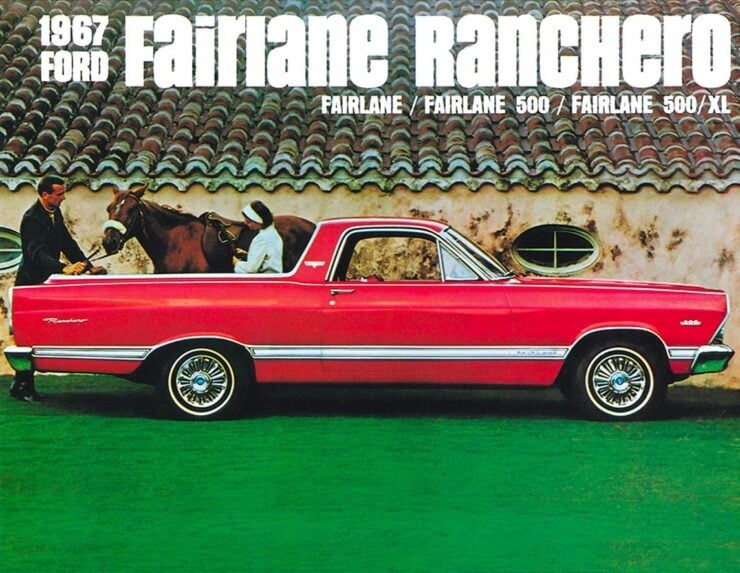

The seventh and final generation (from 1977 to 1979) Ranchero shifted to the Ford LTD II platform, downsizing slightly and aligning itself with the automotive industry’s move towards fuel efficiency following the energy crisises of the 1970s which had sent gasoline prices skyrocketing.
This final version of the Ranchero still offered solid utility and comfort but it soon became clear that the market was diverging, with buyers either wanting a full pickup truck or a dedicated sedan.
In 1979, Ford permanently ceased production of the Ranchero, replacing it in their lineup with compact pickups like the Ford Courier and, later, the Ford Ranger.
The 1967 Ford Ranchero Shown Here
The 1967 Ford Ranchero you see here is in remarkably good condition. It seems likely that it’s been fully restored, but the listing doesn’t mention this or go into any specific details about the vehicle’s history.
We do know that it’s fitted with a factory-original 390 cubic inch V8 and a factory Toploader 4-speed manual transmission, with power sent back to a Ford 9 inch rear end with 3.25:1 limited-slip differential.
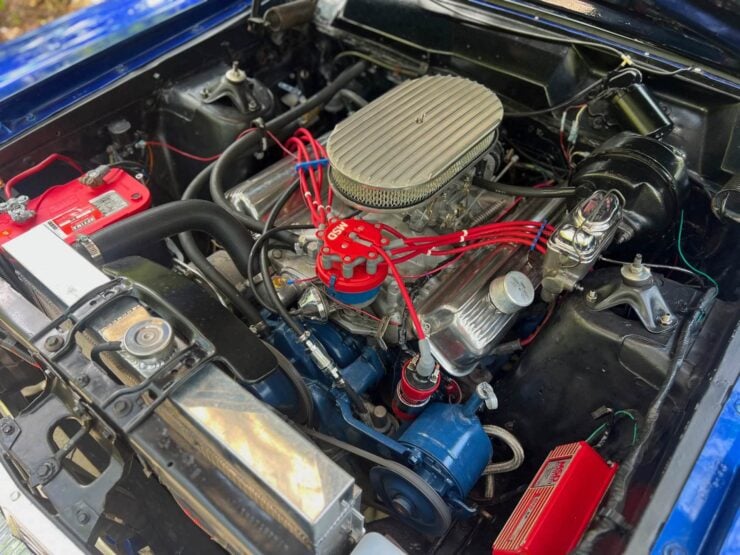

The car has a blue metallic exterior with white details, a custom bucket seat interior in gray and blue, and it has power steering, power front disc brakes, and an aftermarket Kenwood head unit. It rides on factory 14-inch chrome wheels with center caps shod with Cooper Cobra radial tires.
It’s now due to roll across the auction block with Mecum in mid-July, if you’d like to read more about it or place a bid you can visit the listing here.
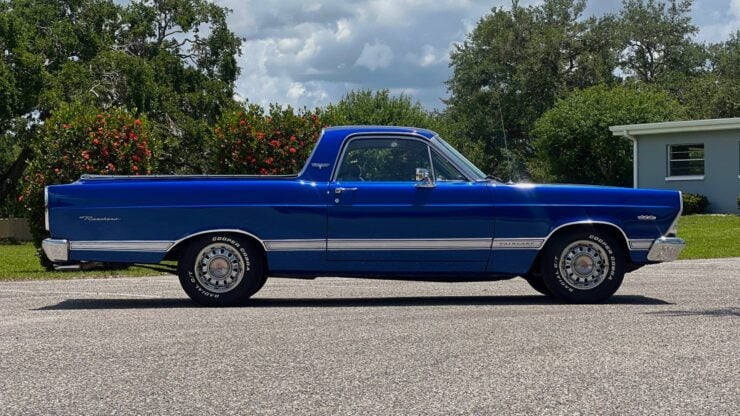
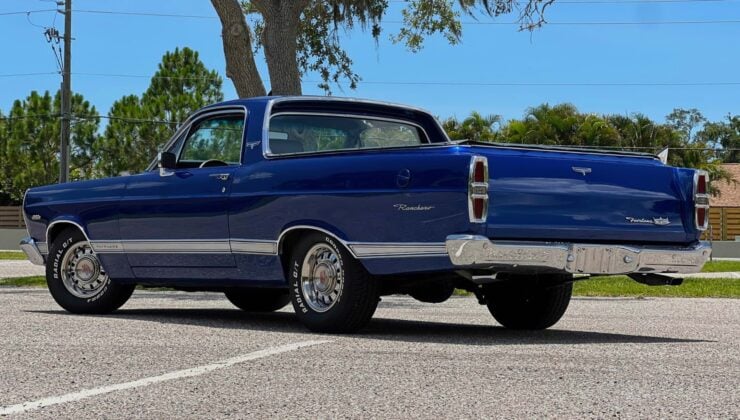

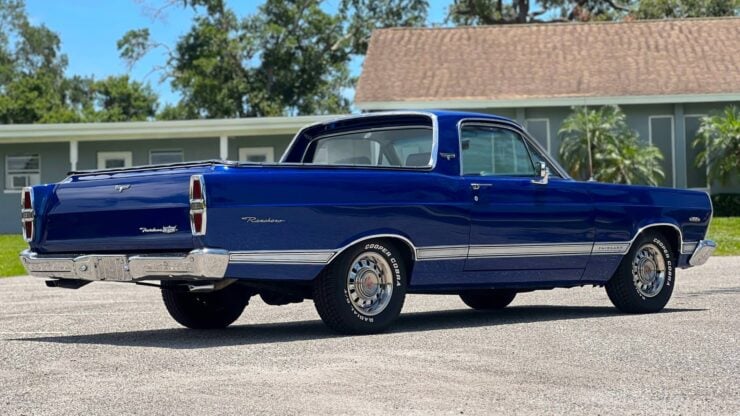
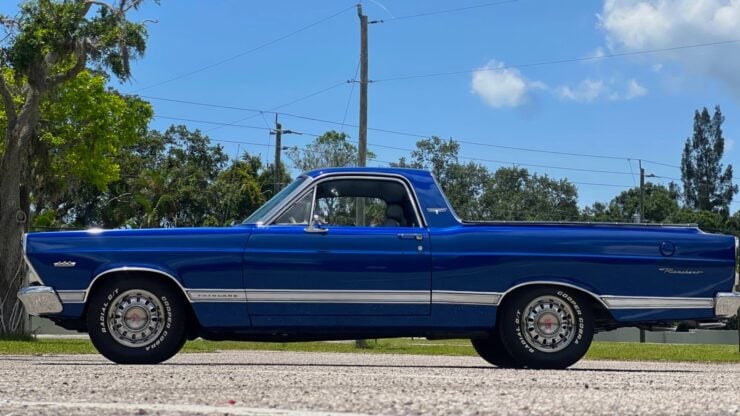
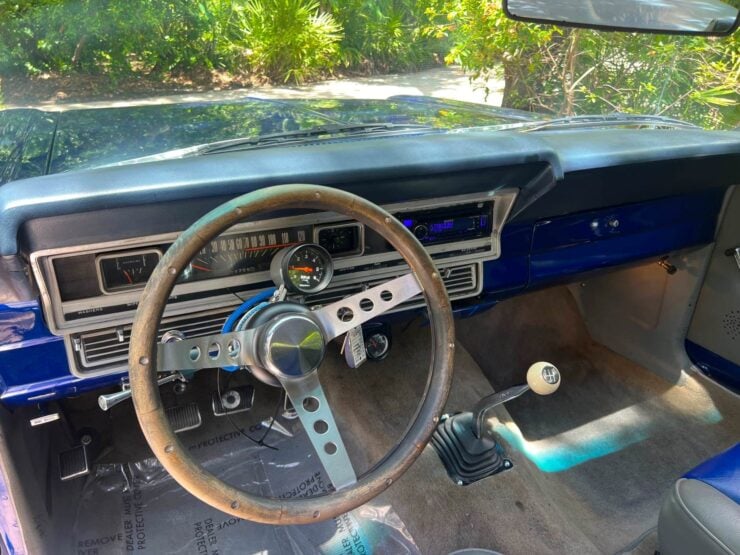
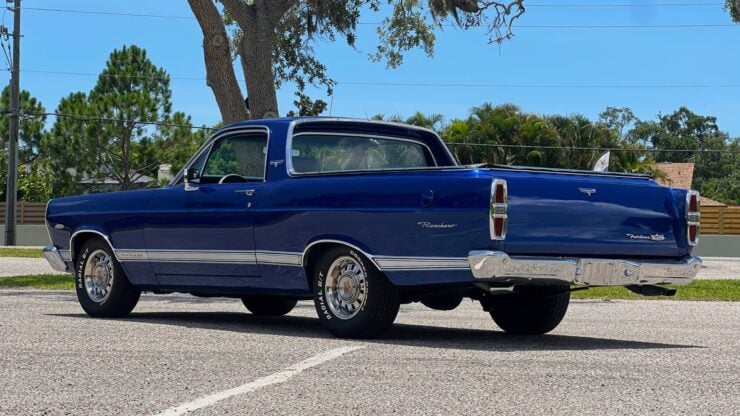
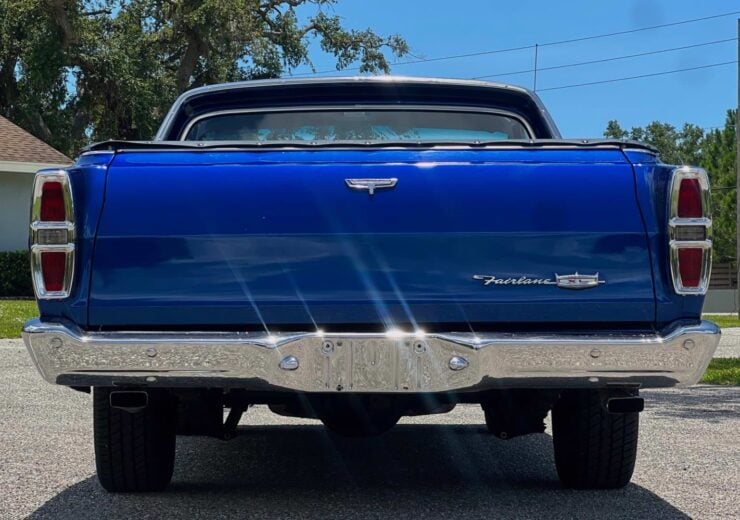
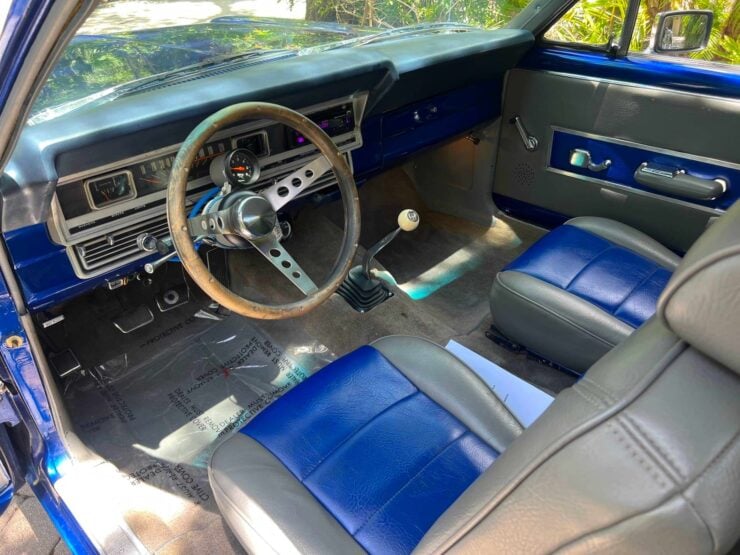
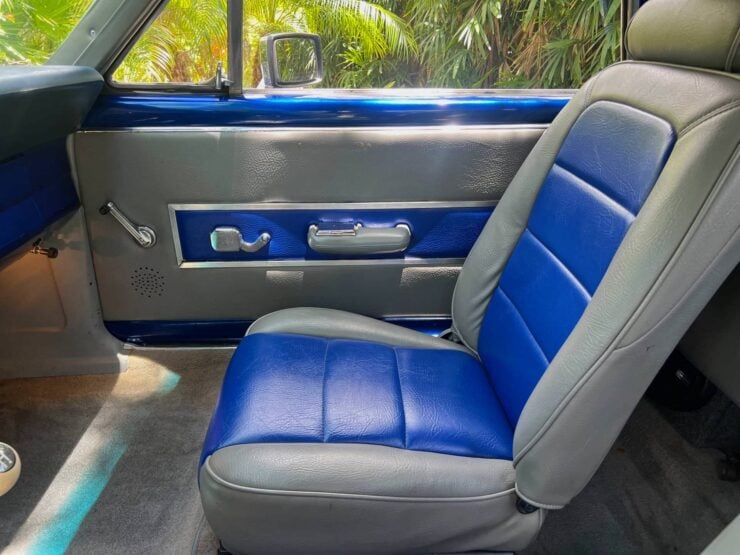
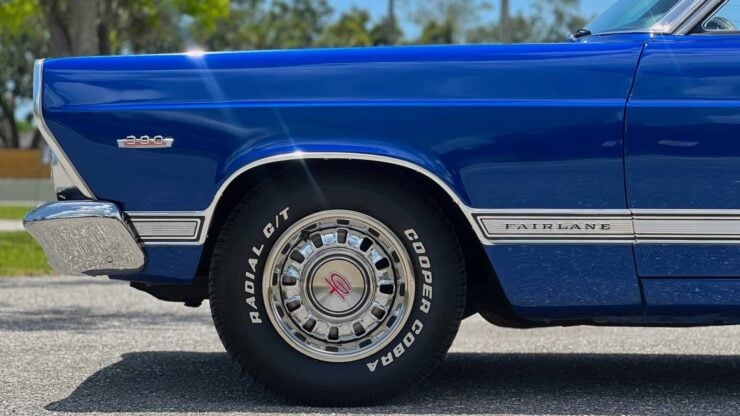
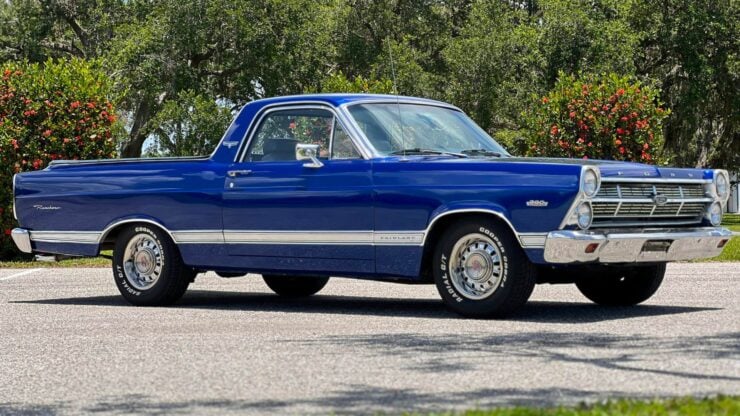
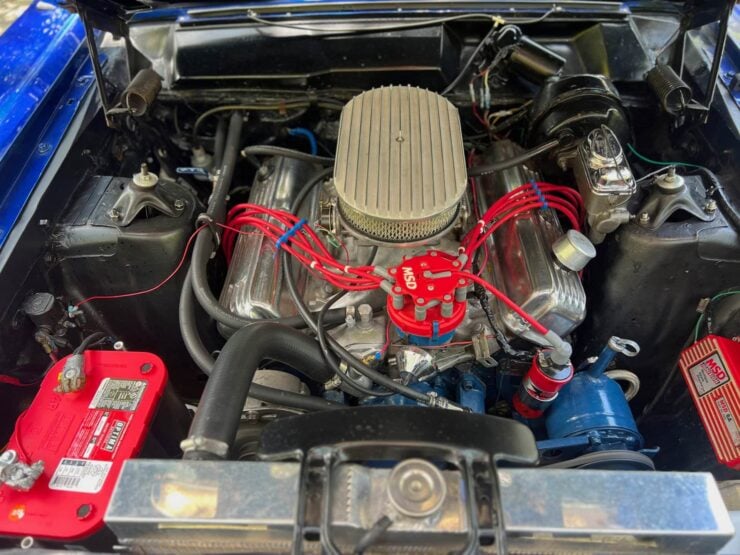
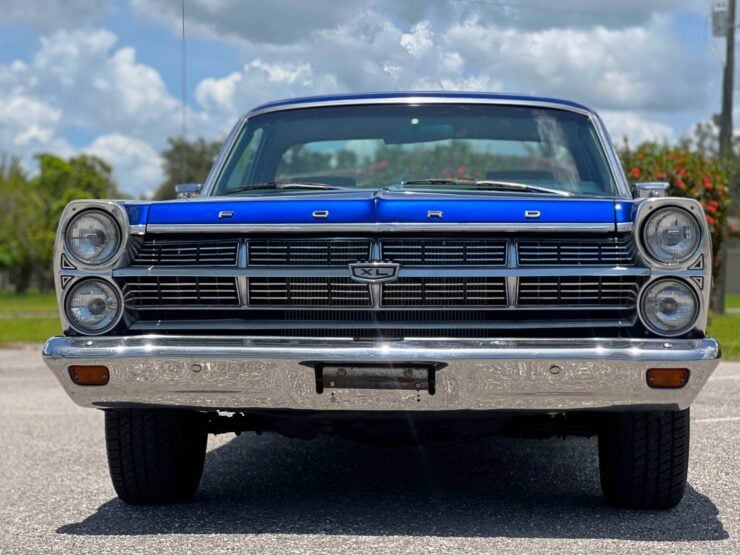
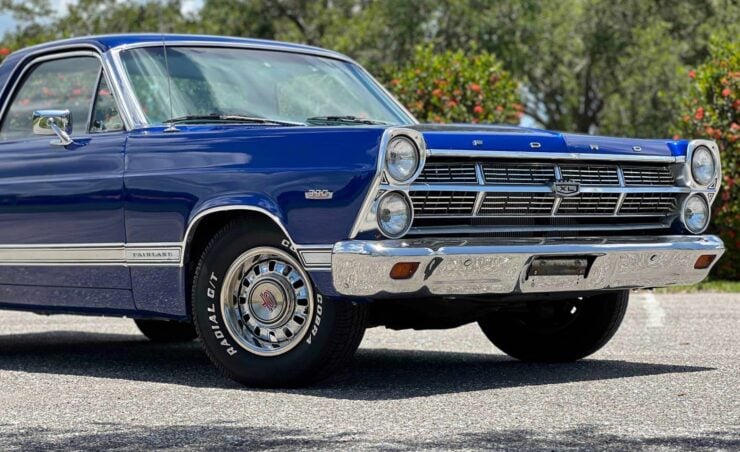
Images courtesy of Mecum

